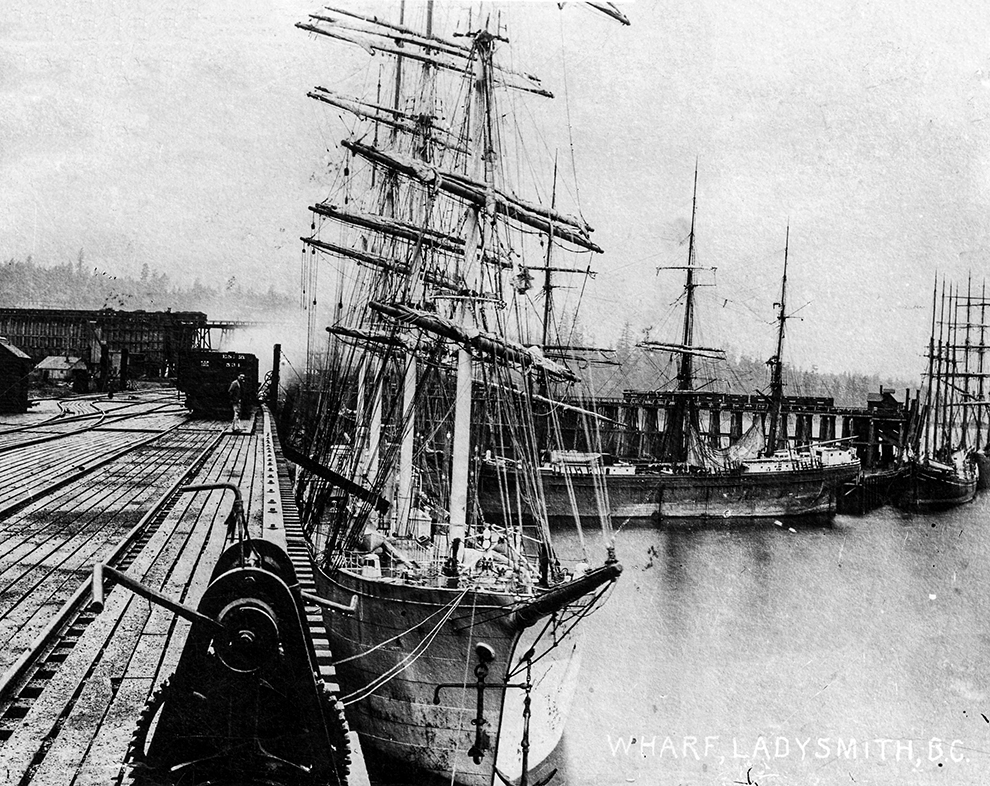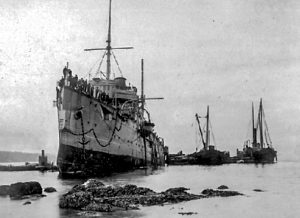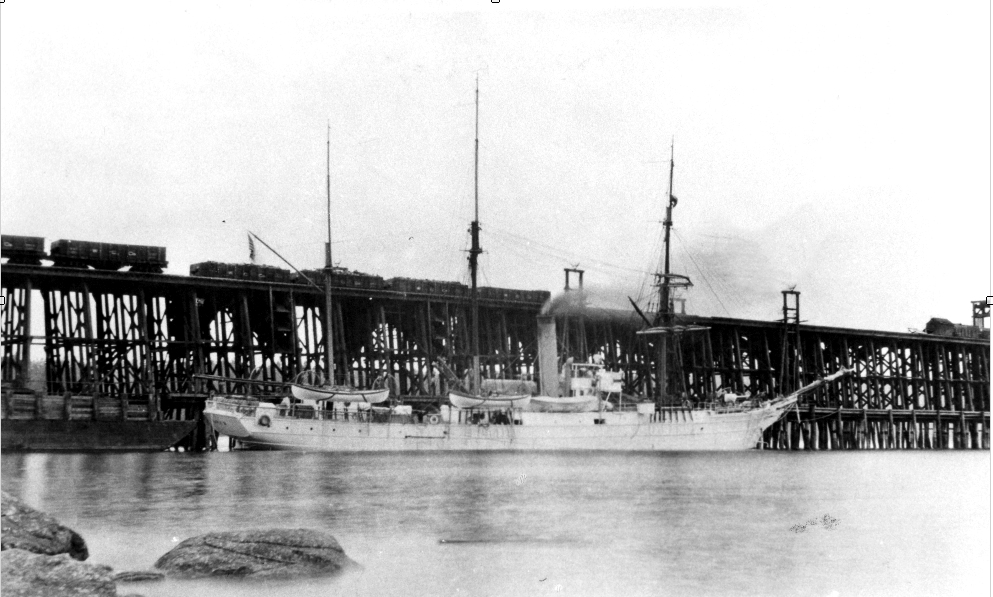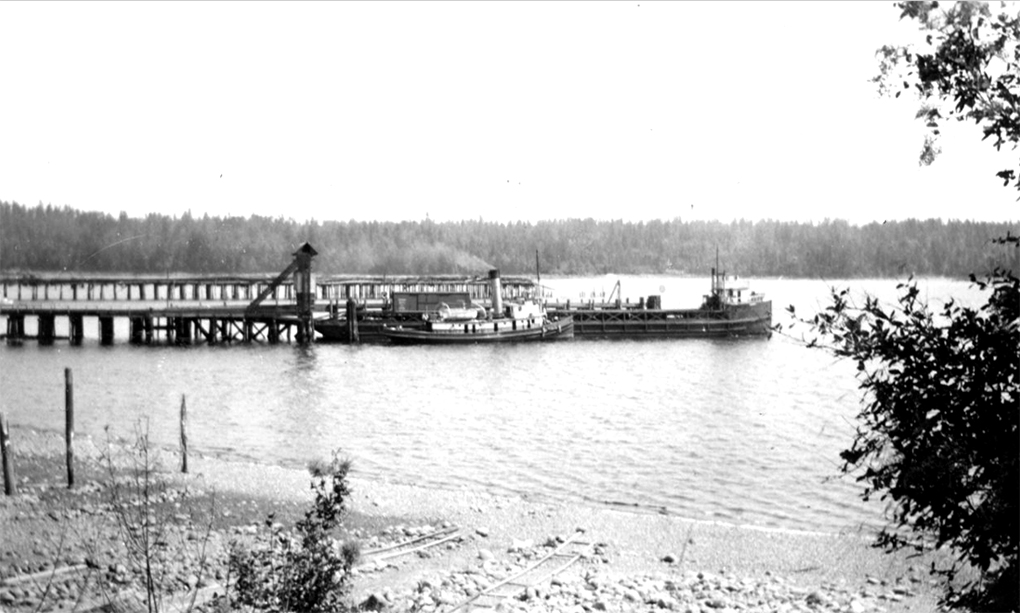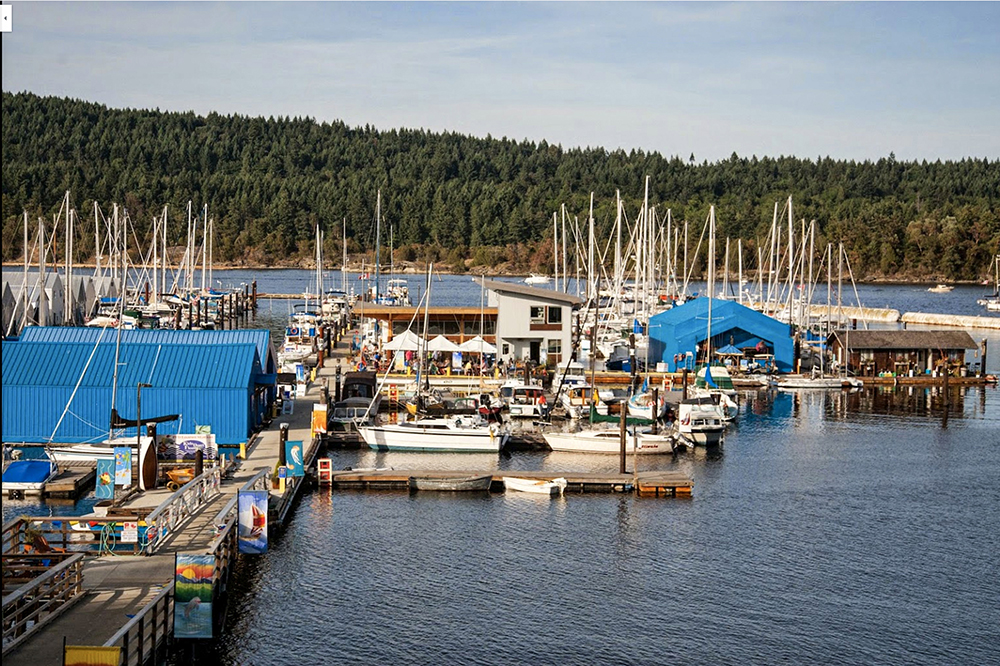A Vibrant Port
Between 1900-1932 Ladysmith was as much a seaport as a coal mining town.
In the coal heydays, over a thousand ships a year docked at the massive Ladysmith wharves to take on coal. To handle this shipping traffic, a handsome brick Customs House with an adjoining Post Office was built in 1909-10 on the Esplanade, facing the harbourfront.
In addition to the coal freighters and tug-drawn scows, a wide variety of ships came to fill their own fuel bunkers.
The Pacific Fleet of the (British) Imperial Navy, with a major base at Esquimalt in southern Vancouver Island, at times used Ladysmith to coal their warships. HMS Flora, a 320’ long Astraea–class cruiser carrying a crew of 318, visited in August 1904. In addition to taking on coal, the crew played a soccer match and afterward entertained the Town with a concert at the Opera House.
World Famous Ships
Some of the visiting ships were world-famous. In 1918, the USS Bear loaded coal at Ladysmith on its way north to Alaskan waters from its home base at Oakland, California. Built in Scotland in 1874 as a state-of-the-art sealing ship with dual steam power and sail and a 6” thick hull designed to withstand the effects of ice, the Bear was purchased by the US Navy in 1884. It participated in the rescue of the ill-fated Greeley Arctic expedition in 1885 and went on to have a long history of Arctic and Antarctic exploration – even featuring in a movie – the 1930 film version of Jack London’s 1904 novel ‘The Sea Wolf’. The ship once again hit the news in 2021 when its hull was located in the waters off Sable Island, Nova Scotia.
The End of an Era
The closure of the Extension coal mines in 1931 ended Ladysmith’s history as a major coaling port. The great wharves, which over their 31-year lifespan had seen in excess of 10 million tons of coal shipped, were abandoned, fell into decay and were eventually removed.
The railway to Transfer Wharf continued active up till 1955, forming an important link for rail traffic between mainland British Columbia and Vancouver Island.
Instead of coaling freighters and battleships, Ladysmith is today visited by pleasure craft of all descriptions, which dock at one of the four marinas in the spacious harbour. Large commercial shipping, while no longer docking in the harbour, use it for temporary anchorage while awaiting entry to the Port of Vancouver.


